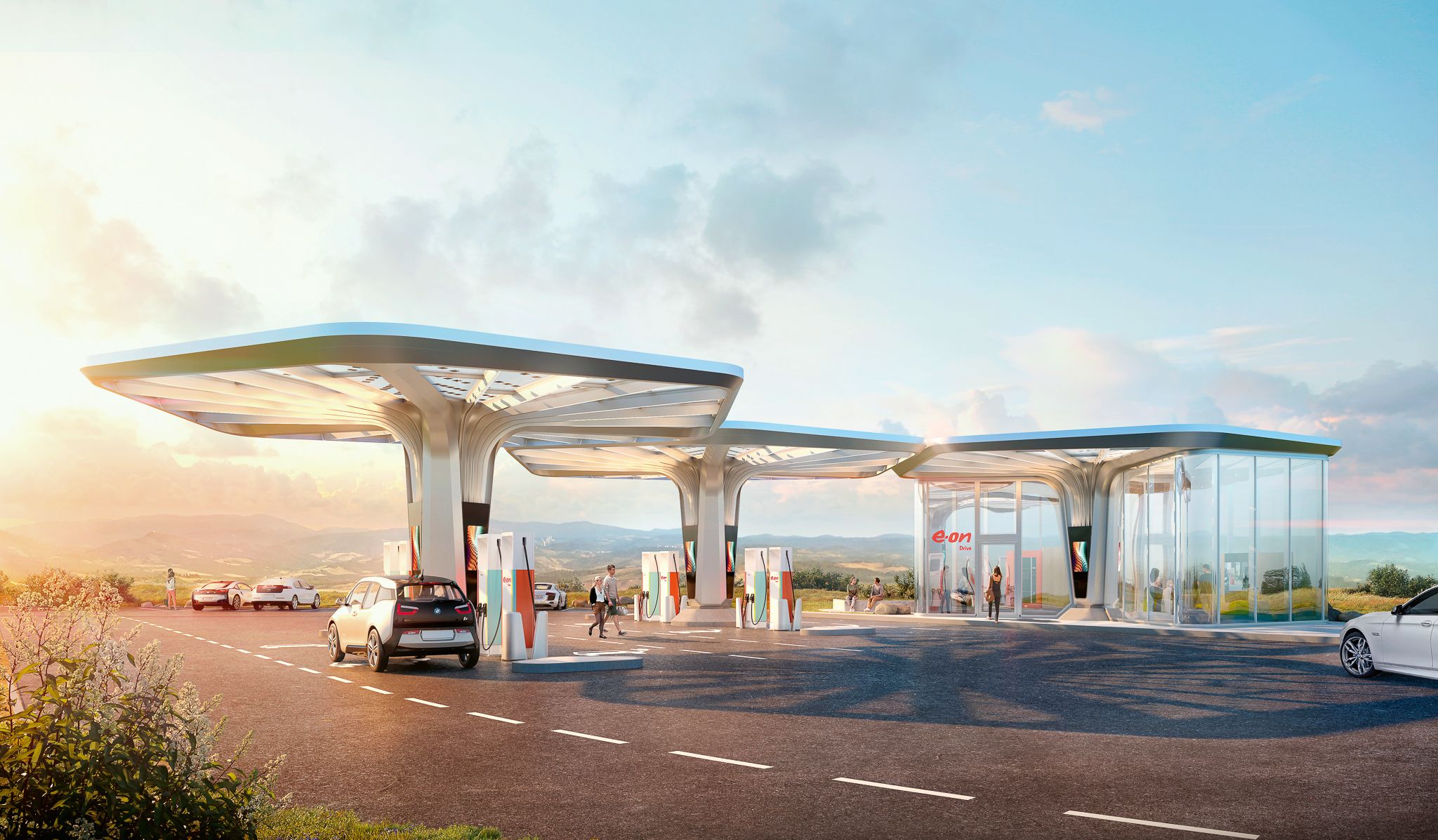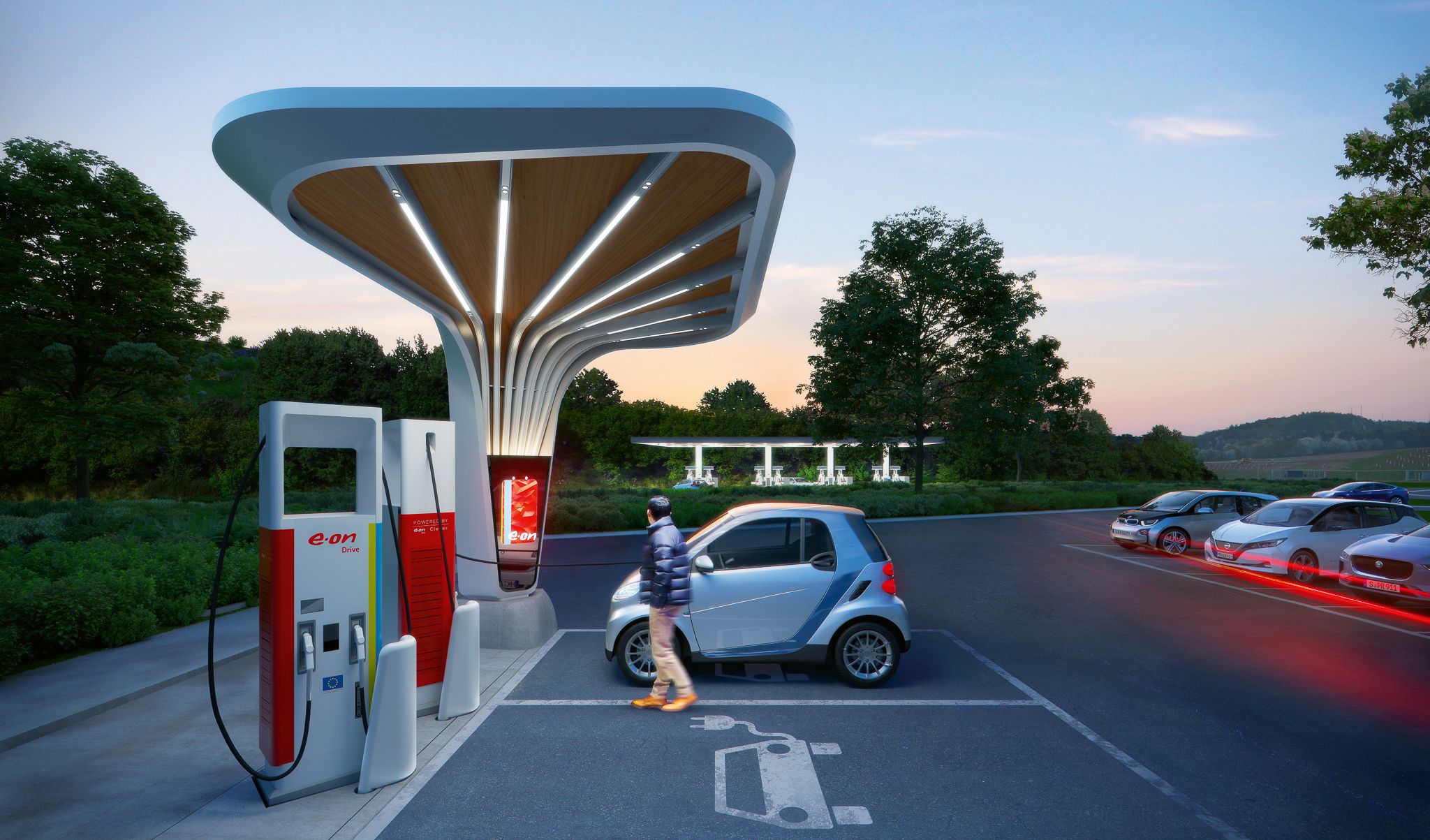
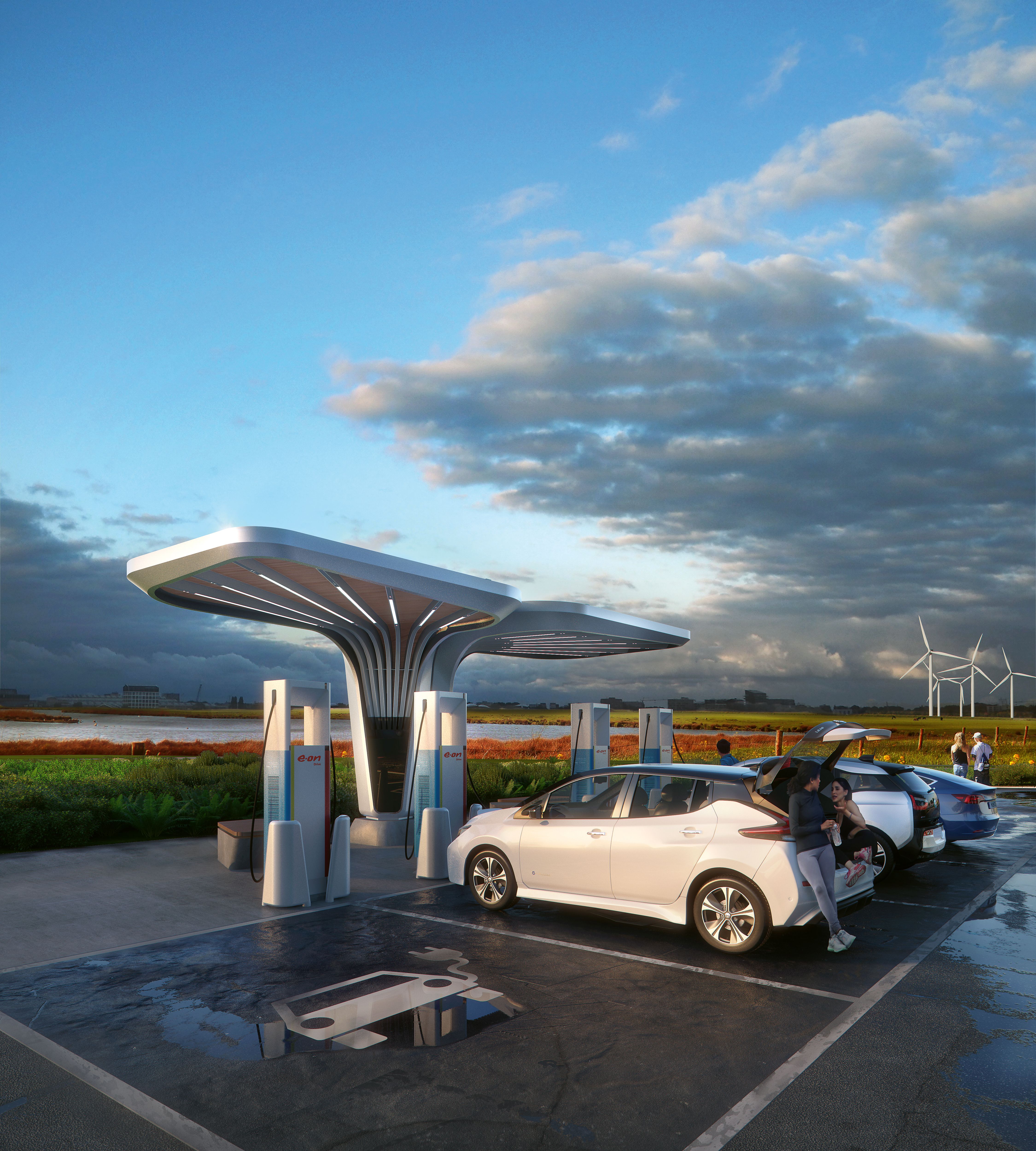
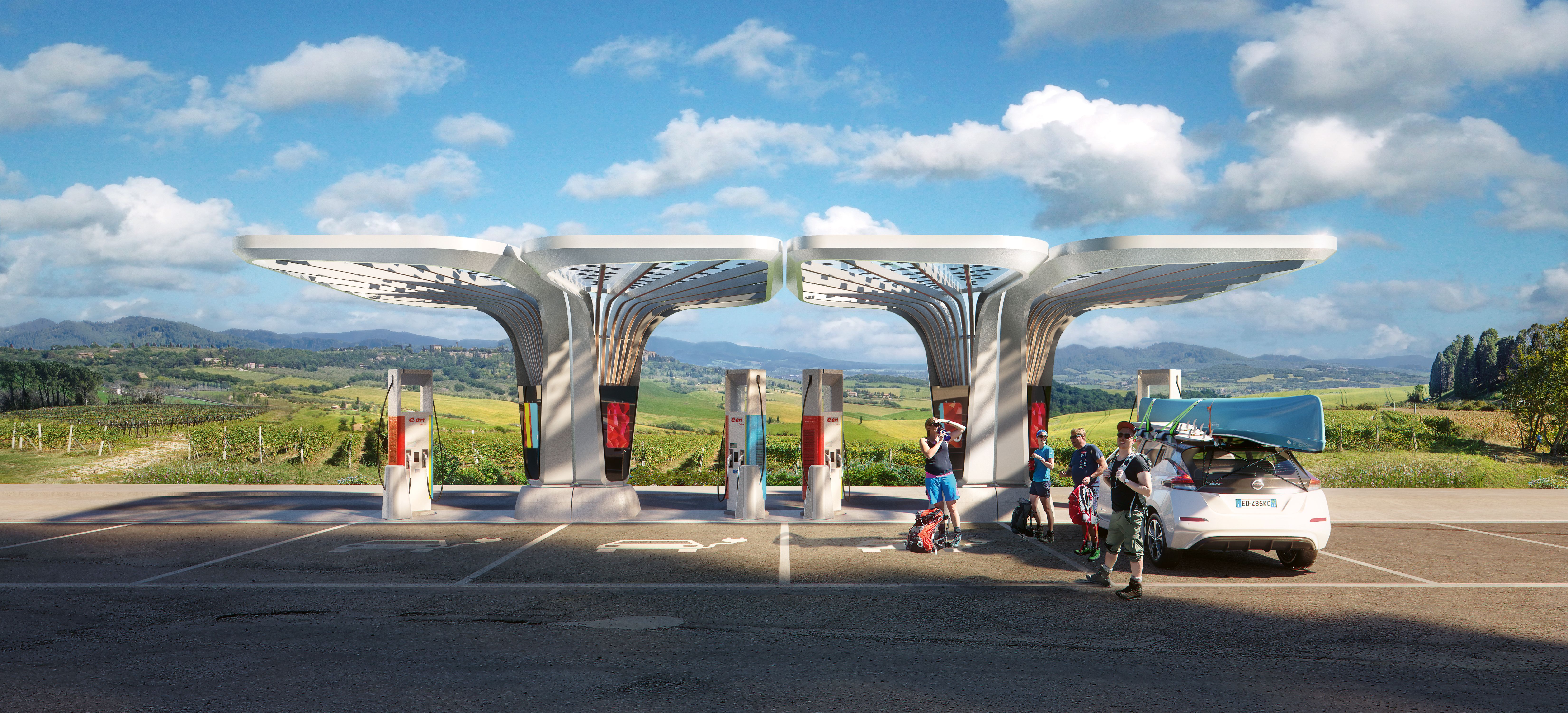
International Design Award IDA 2021: Honorable Mention, International Architecture Award 2021: Winner
By 2022, an estimated one million customers will be driving electric vehicles in Germany alone. What will happen when electric vehicle technology matures and enters the mainstream? What implications will this have for future patterns of mobility and infrastructure requirements?
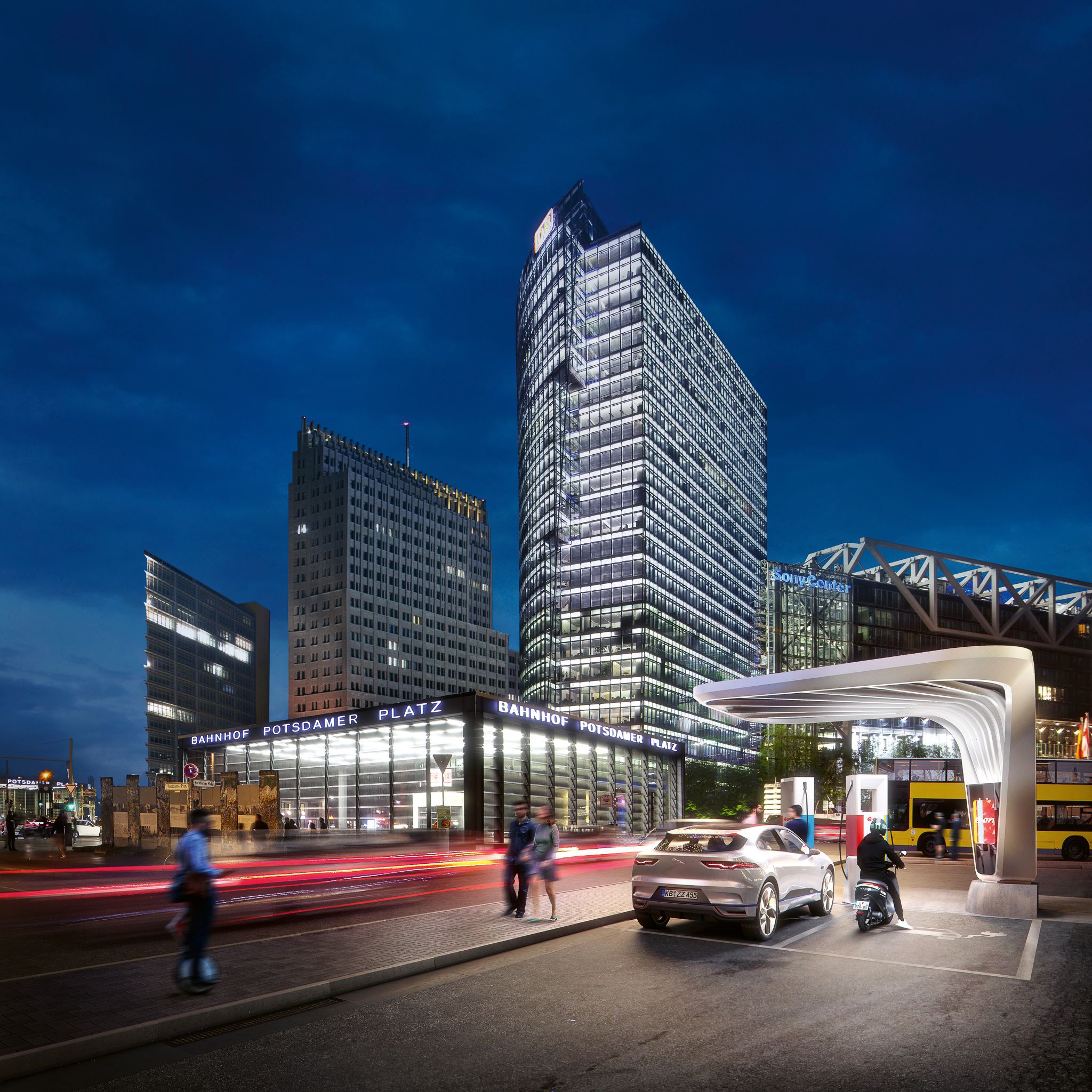
As well as developing an intelligent network of fast-charging stations, suppliers must also respond to changing customer expectations caused by longer stopover times. The 20 to 30 minutes it takes to charge a car battery changes the sequence of processes within motorway service areas and creates the need for new and alternative facilities. Consequently, there needs to be a fundamental rethink of public charging stations. Together with its partners, E.ON operates one the largest electric vehicle charging networks in Europe, having installed over 36,000 charging points in customer locations in 25 countries across the world.
On behalf of E.ON Drive, GRAFT and GRAFT Brandlab developed a prototype for an ultra-fast charging station. This was further developed into an innovative, extendable system of modules capable of adapting to future requirements.
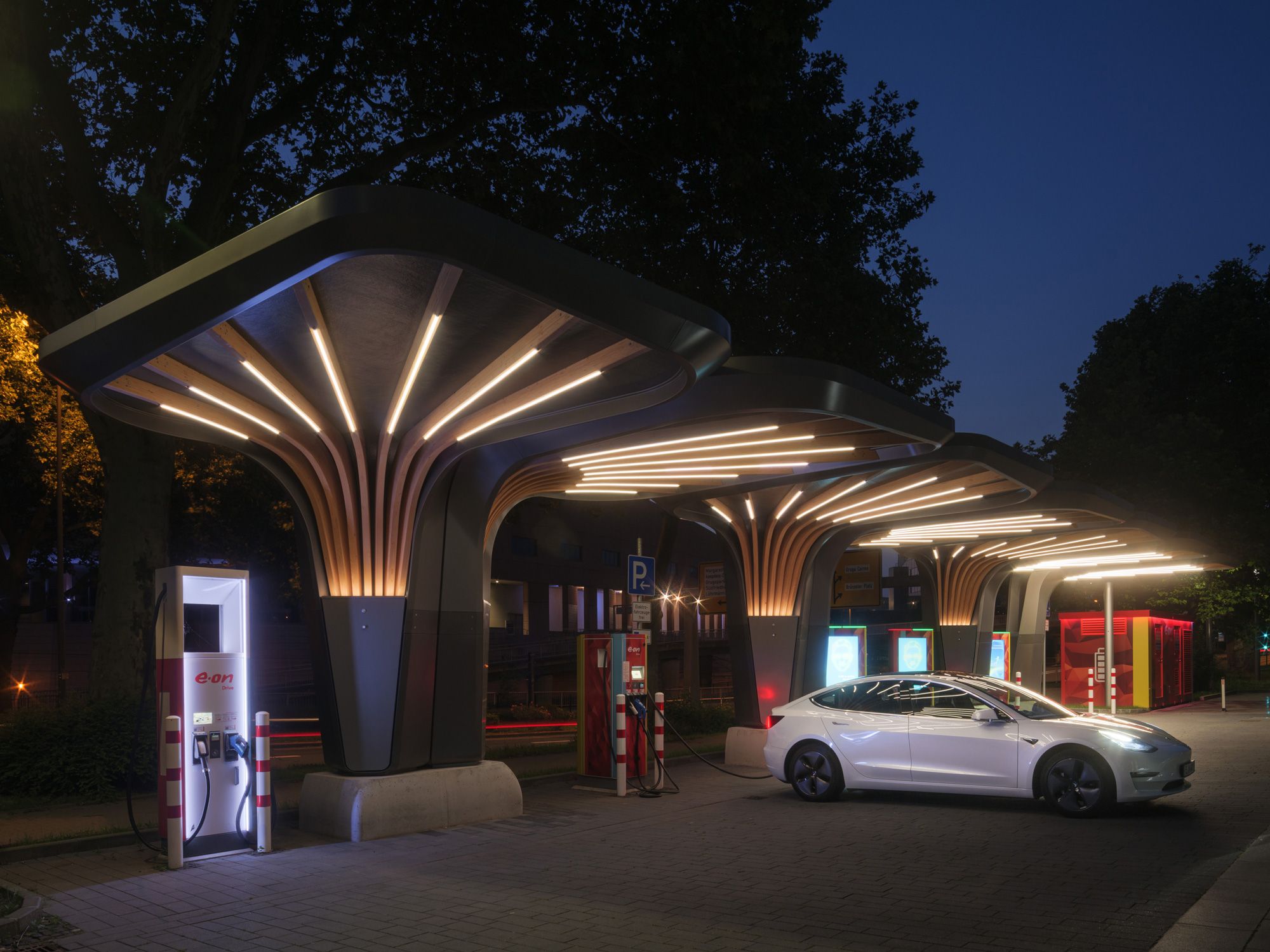

The design creates a high-quality stopover environment that provides both customers and suppliers with a range of functions and additional services not commonly associated with filling stations. E.ON Drive and GRAFT’s design for ultra-fast charging stations breaks new ground by placing emphasis on user experience, thus contributing to the technology’s establishment in society.
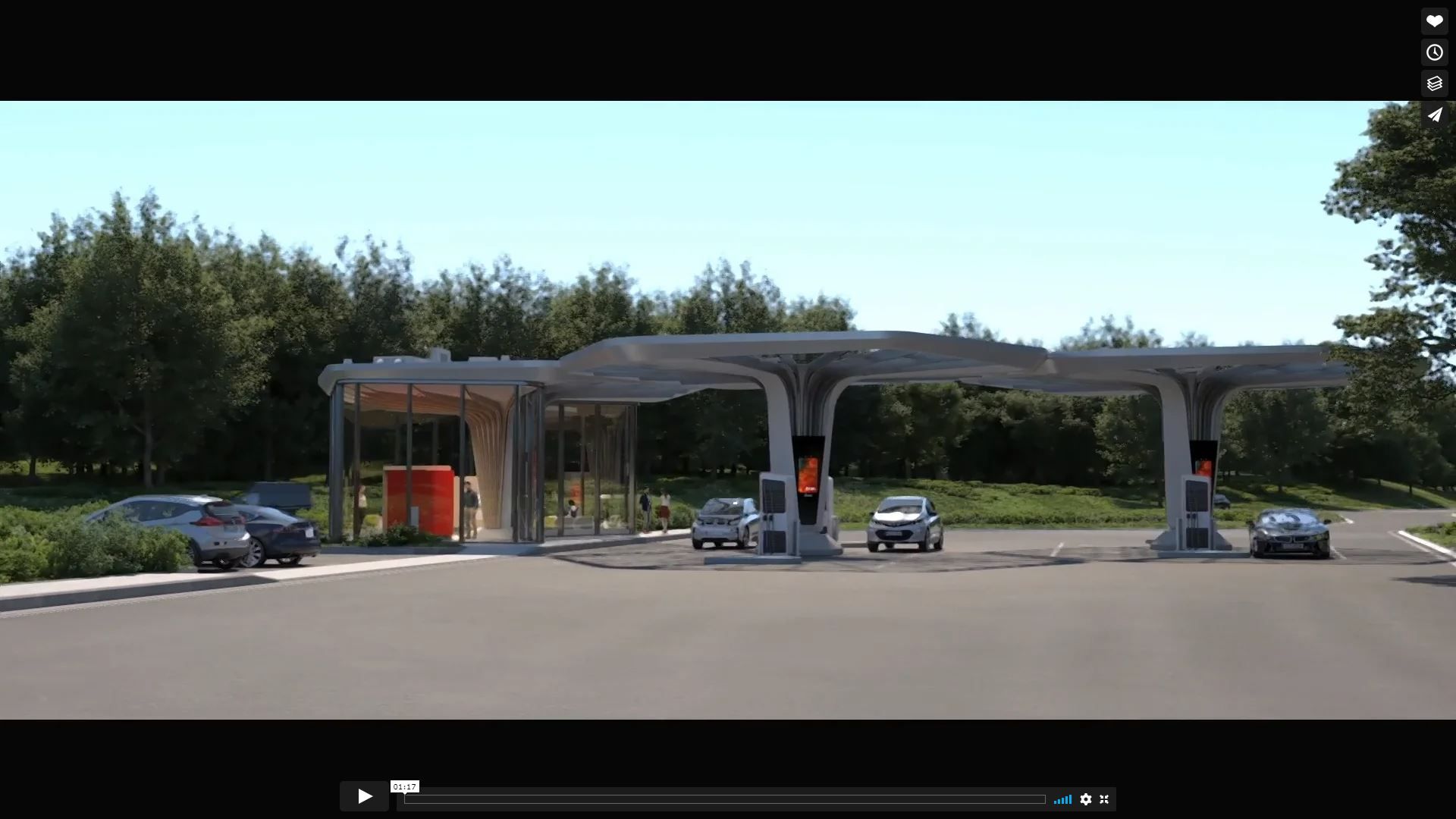
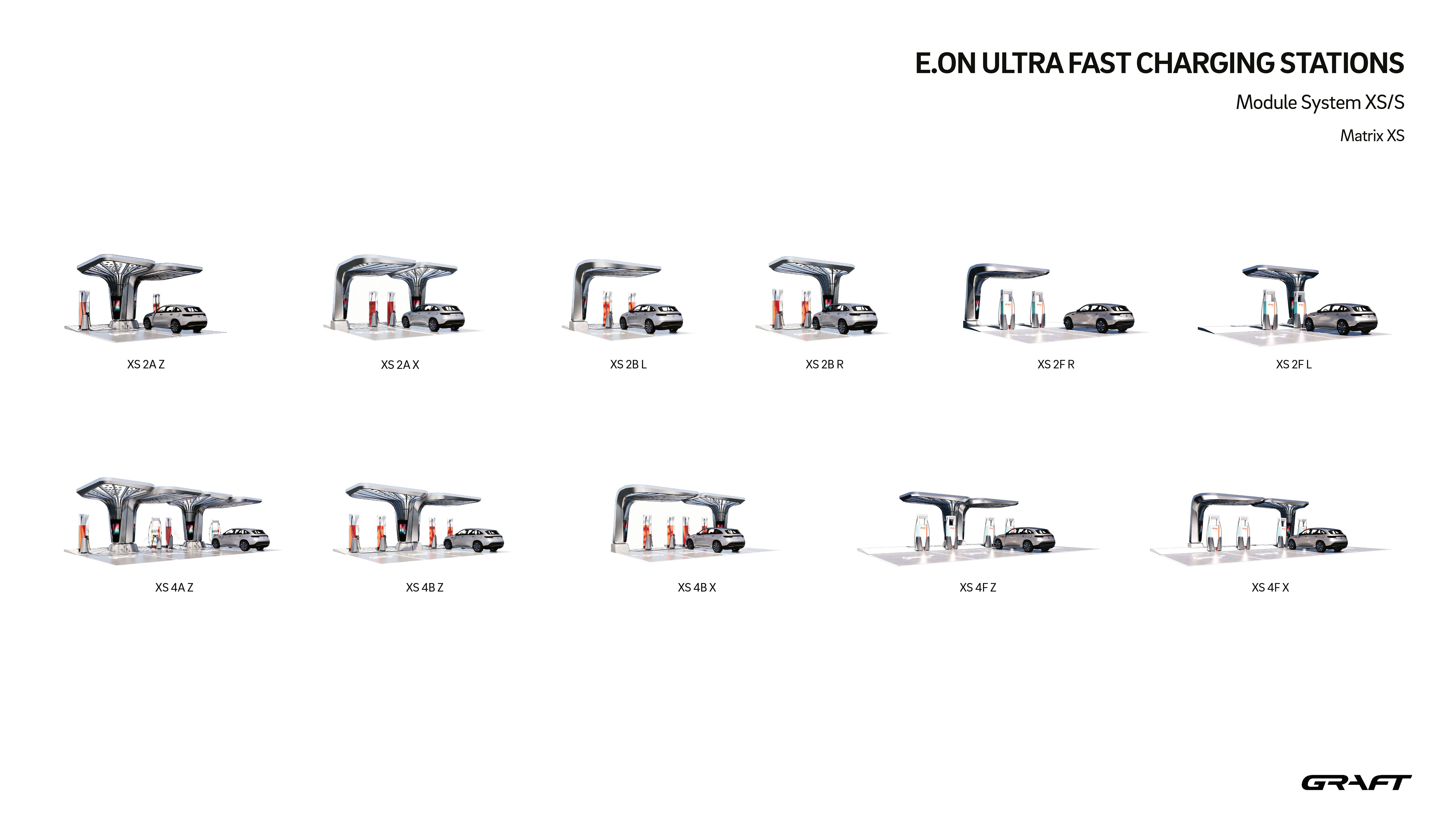
Based on two basic modules, the system is able to cater to a wide variety of charging and parking situations:
The smaller of the two modules can be combined to form XS or S stations. With a rectangular footprint of around 3.5m × 5m, it was developed for use in existing car parks and service areas. Its clever geometry makes it possible to provide partially covered parking for one to two spaces in ten different countries. Its self-supporting steel structure allows the modules to be extended linearly to create smaller drive-through variants with up to four charging points. Such stations are also suitable for urban contexts, providing covered barrier-free parking in parallel or angled configurations.


With an elegant steel roof construction that extends up and over the user like a bright, airy canopy, the station’s design creates a defined space that is protected from the elements, transforming the charging area into a place of rest. Lighting integrated into the frame automatically activates when the charging zone is occupied, creating a clearly specified, safe and comfortable space.
These frames can be configured in different ways: either featuring an opaque roof with or without greenery; or a glass roof with or without integral photovoltaic panels. When implemented, the photovoltaic system supplies energy for the lounge and the integrated media technology. Slats beneath the roof act as filters, modulating and channeling sunlight into the charging bay area. The precision and dynamism of the construction underlines E.ON’s brand identity and consumer experience.
Embodying similar principles in order to ensure a high-quality stopover experience, the station lounges feature fully glazed external walls that create a sheltered space open to the surroundings. Natural materials are used throughout the interior to create a restful, relaxing atmosphere. Media elements are also incorporated in to the design, for example touch screens integrated in the furniture, which enable customers to communicate directly with suppliers.
The recognizable brand architecture of the first generation of E.ON charging stations is scalable, smart and sustainable, and perfectly embodies the company’s spirit of innovation at the forefront of technological solutions for society. A goal of the design is that many of the featured elements, which are primarily aimed at increasing customer experience and user friendliness, will find their way into future government tenders and consequently be made accessible to as many potential users as possible.
